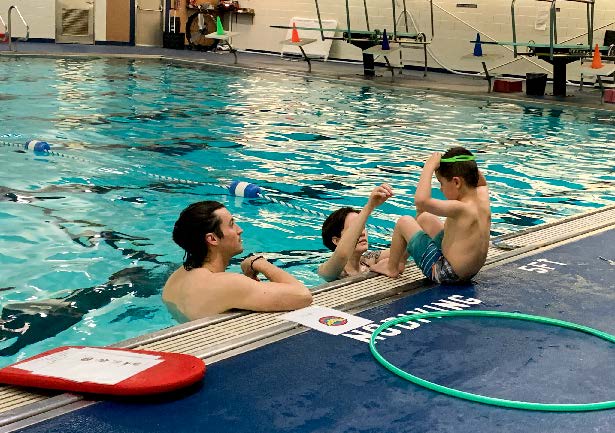COLUMBUS, Ohio – With a $2.9 million Department of Defense award, researchers with The Ohio State University Wexner Medical Center and College of Medicine's School of Health and Rehabilitation Sciences are expanding a personalized water competency and water safety training for children with autism spectrum disorder.
"Drowning is the leading cause of accidental death for children with autism. This funding supports training 64 people to deliver our AquOTic occupational therapy intervention to 108 children with autism," said lead researcher Jewel Crasta, PhD, assistant professor of occupational therapy at Ohio State. "We want to make this swim safety training more broadly accessible to the wider autistic community."
 Previous research from Ohio State found that AquOTic lessons were associated with improved swimming skills and greater safety around water. Participants also showed gains in physical and social competencies beyond the swimming pool, according to Erika Kemp, clinical associate professor of occupational therapy and director of the occupational therapy program at Ohio State.
Previous research from Ohio State found that AquOTic lessons were associated with improved swimming skills and greater safety around water. Participants also showed gains in physical and social competencies beyond the swimming pool, according to Erika Kemp, clinical associate professor of occupational therapy and director of the occupational therapy program at Ohio State. Traditional swim lessons may be less effective for children on the autism spectrum due to their unique sensory, motor, and behavioral traits.
Families with autistic children often report limited access to swim instructors who are trained to address their children's specific developmental and instructional needs.
Traditional community swim instructors rarely receive training on adapting lessons for children with neurodevelopmental conditions like autism.
The AquOTic intervention is led by an expert therapist and includes 1:1 child: interventionist support in a group environment. Interventionists are typically graduate therapy students who work with one child throughout the intervention, building rapport and tailoring the intervention to the child's needs.
"This next step in the research is critical to ensuring access to individualized swim skills instruction for children on the autism spectrum. Water competency is a critical step in drowning prevention," Kemp said. "This grant allows us to both scale the intervention and provide training to both professional students and community instructors."
/Public Release. This material from the originating organization/author(s) might be of the point-in-time nature, and edited for clarity, style and length. Mirage.News does not take institutional positions or sides, and all views, positions, and conclusions expressed herein are solely those of the author(s).View in full here.






